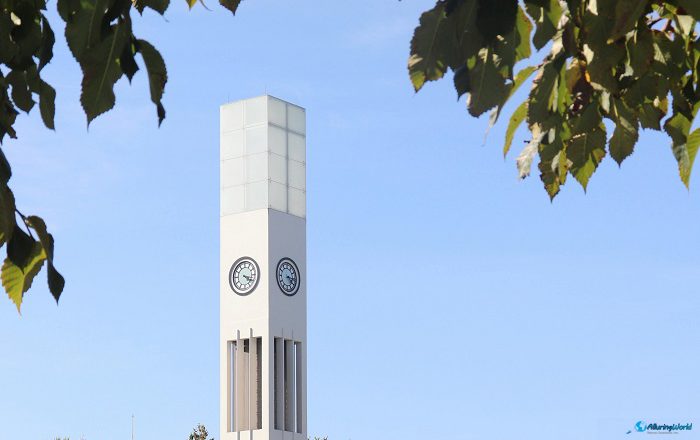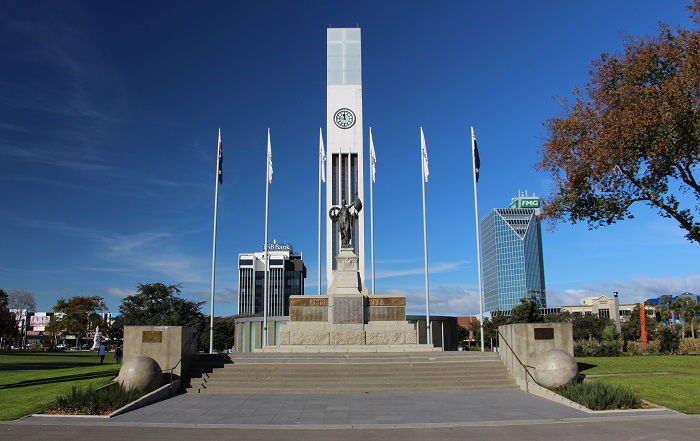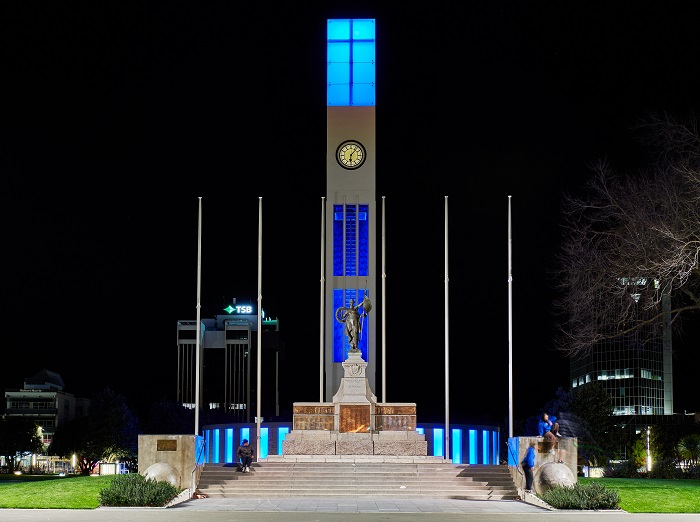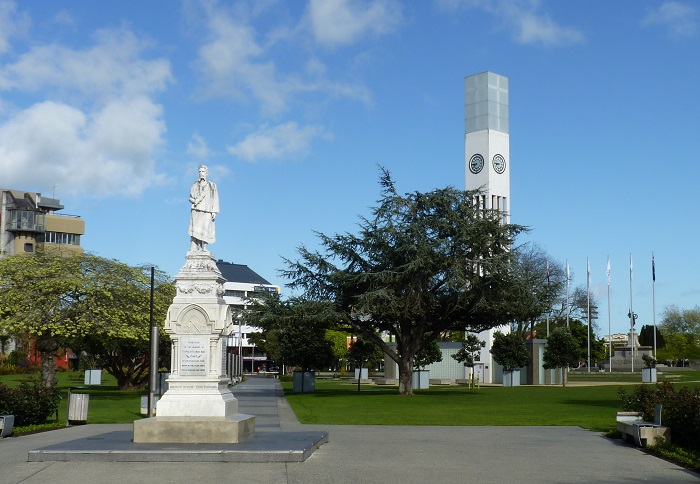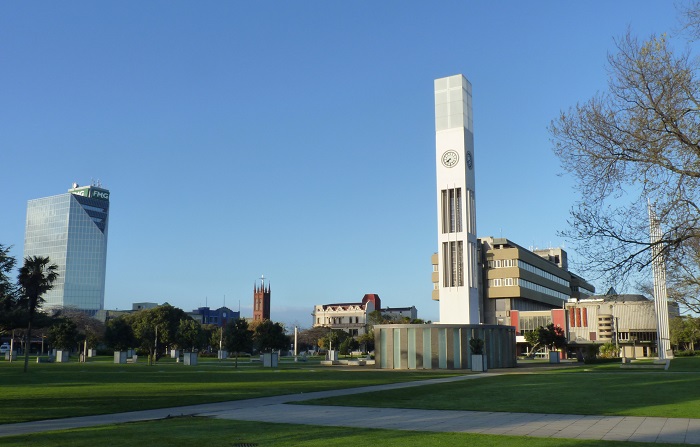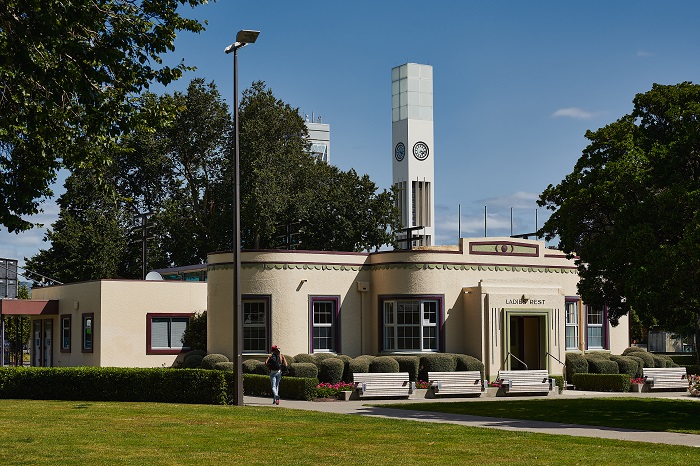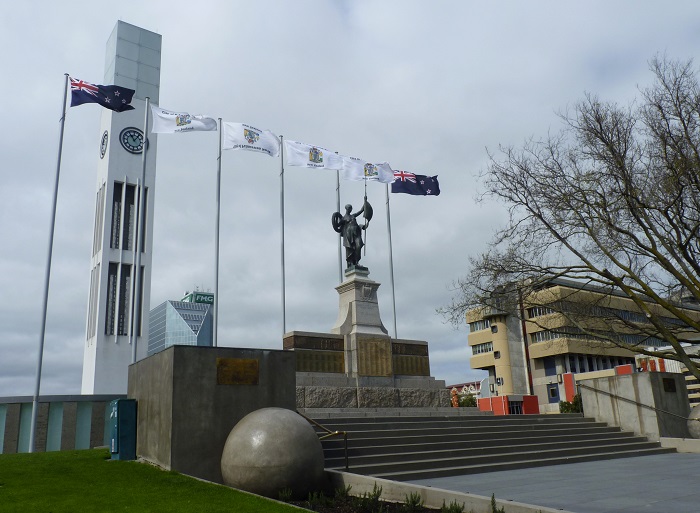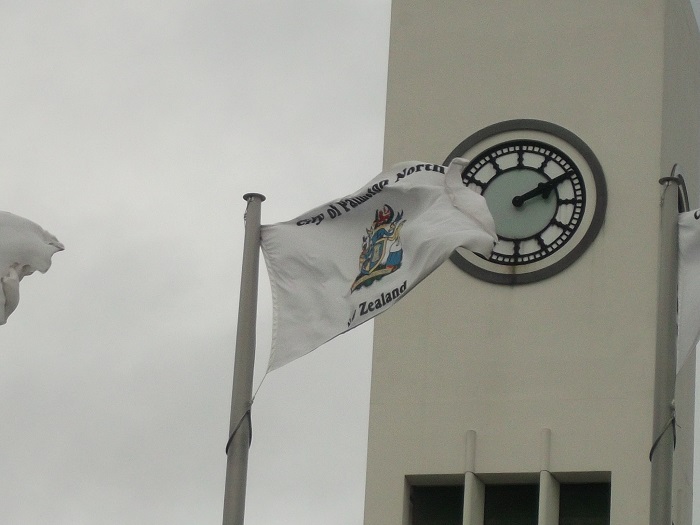The Hopwood Clock Tower is an iconic landmark that has stood as a symbol of growth and development of the city where it is located, and it can be found in the heart of the city of Palmerston North, which is the seat of the Manawatū-Whanganui Region, in the southern part of the North Island, within the central part of the island nation of New Zealand. Having its quite distinctive design and even more interesting and rich history, the clock tower today remains a point of interest for both locals and visitors.
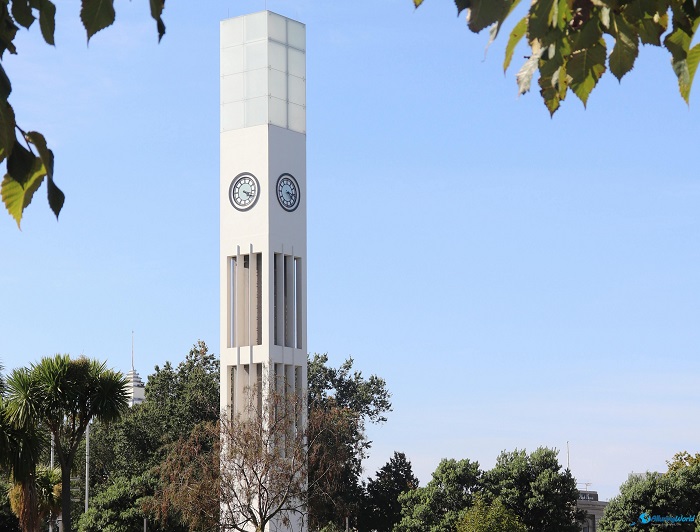
The initial clock was originally located in the city’s post office on Main Street, but due to the 1942 Wairarapa earthquake, for safety reasons, it was removed and placed in storage. As the clock was an indelible mark of the city, soon there were requests from the locals for the clock to be once again put in public, so the plan to build a clock tower was put in motion, and what we see nowadays as a clock tower was originally built in 1953 mainly due to the generous donation by a local businessman named Arthur Hopwood who donated £10,000 to the local council to build the new tower.
As the new clock tower was built on The Square, which is Palmerston North’s central park, the clock tower became part of a complex of municipal buildings, which soon became a recognizable landmark of the city. However, as there were several restorations throughout the years, mainly in the early 1990s, the sound shell at the tower’s base was removed, and with the refurbishment in the 2000s it was proved that the tower does not meet the modern safety criteria so it was fully demolished.
As the rebuilding process was extensive, the current Hopwood Clock Tower was officially completed in 2007 within The Square, ensuring historic preservation while improving its structural integrity. This rebuilding was funded by the Hopwood family, in honor of Arthur Hopwood, who had contributed significantly to the city, and even though it was considered to keep the original design, the new design still retained elements of the original, blending modern engineering with historical significance.
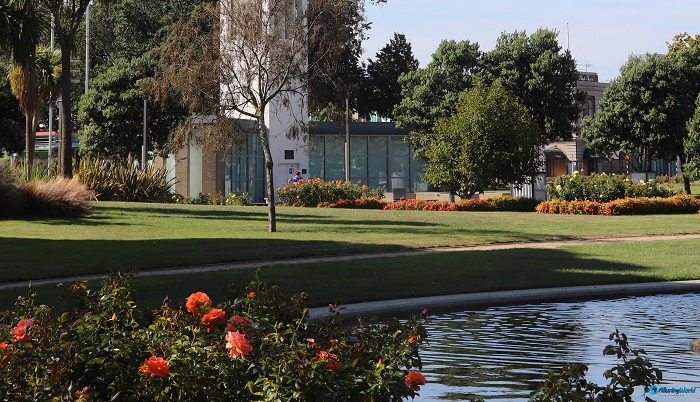
Architecturally, the Hopwood Clock Tower features a sleek, modernist design with a strong vertical presence. It is constructed primarily from reinforced concrete and steel, ensuring durability while maintaining a minimalist aesthetic. A distinctive feature is the illuminated cross at the top, which was preserved from the original tower and reinstated to honor the city’s heritage. The tower’s glass panels add a contemporary touch, allowing light to pass through and giving it a striking appearance, especially at night.
Traditionally, the clock tower had been an important civic landmark and reminder of passing time for local people, a friendly face in the city center where individuals could be seen meeting and greeting, and today its pertinence is as keen as ever, both as an operating timekeeper but also as an emblem of Palmerston North’s commitment to maintaining its heritage whilst moving into the future. The tower still finds itself at the heart of public events, celebrations, and festivals in The Square.
It is convenient to go to the Hopwood Clock Tower since it is situated in the center of Palmerston North, and visitors can walk to The Square, drive there, or use public transport. The open environment of the park ensures that everyone can see the tower without obstruction, and as there are nearby benches, gardens, and walkways, it is a quiet friendly place to sit and appreciate the setting.
The peak visitation time is during the evening when the tower shines because the lighting adds to a stunning moment in the night sky, but dusk complements the experience, adding quiet and stillness in The Square that deepens the admiration in an evening shoot or mere appreciation of the stand of the edifice.
Overall, the Hopwood Clock Tower stands as a testament to Palmerston North’s evolving identity, balancing history with modern design. Its journey from removal to reconstruction reflects the city’s dedication to preserving its heritage, ensuring that future generations can continue to appreciate this cherished landmark.

